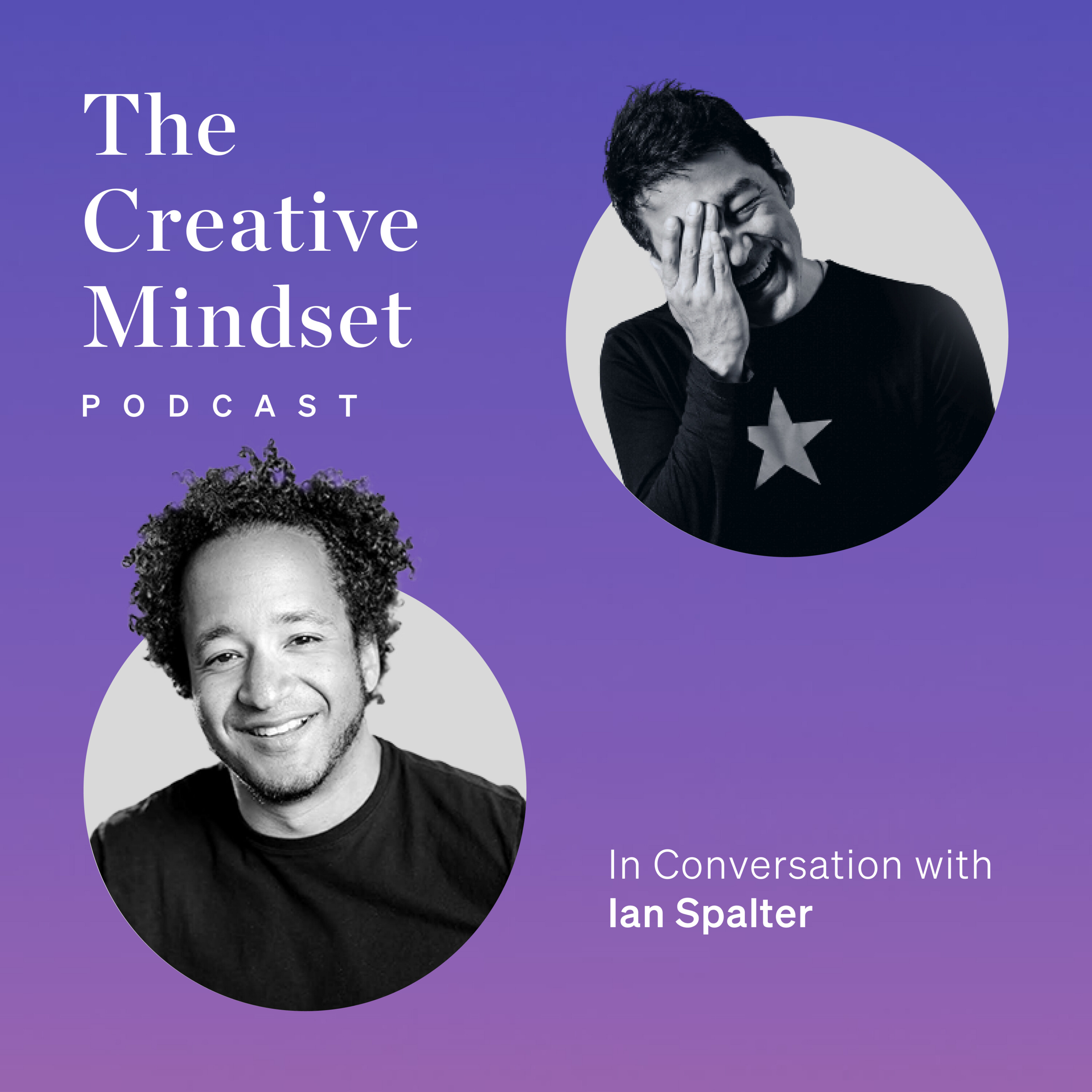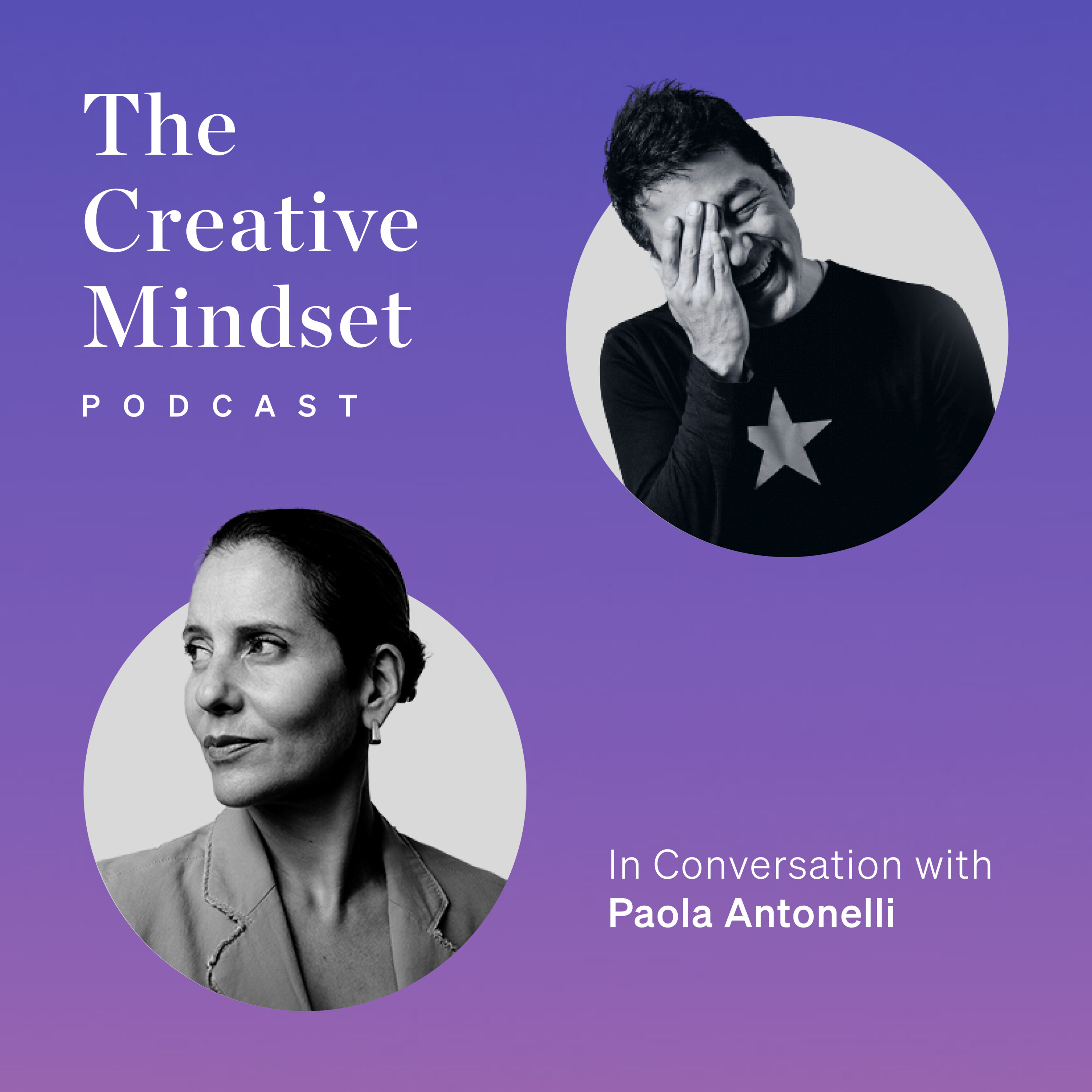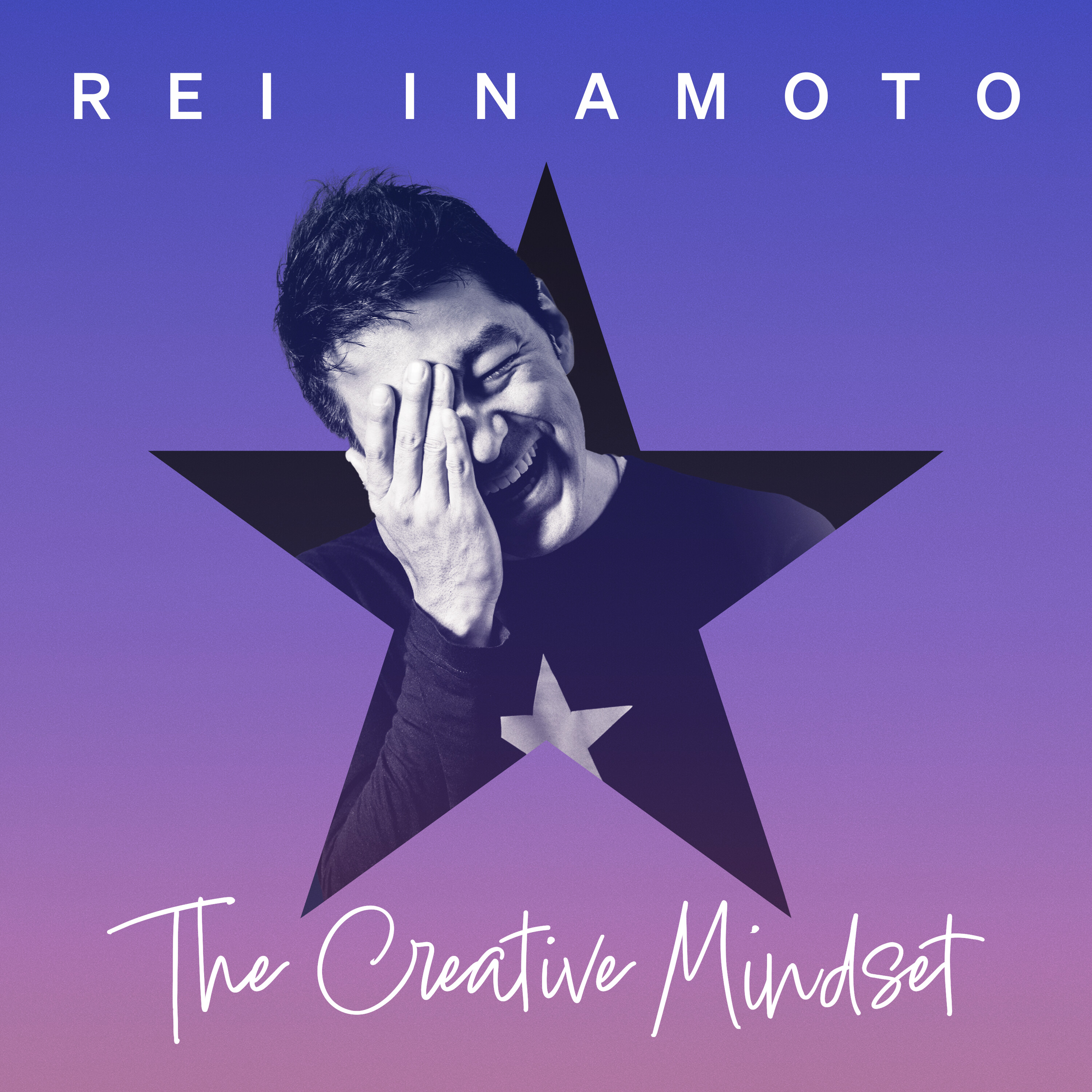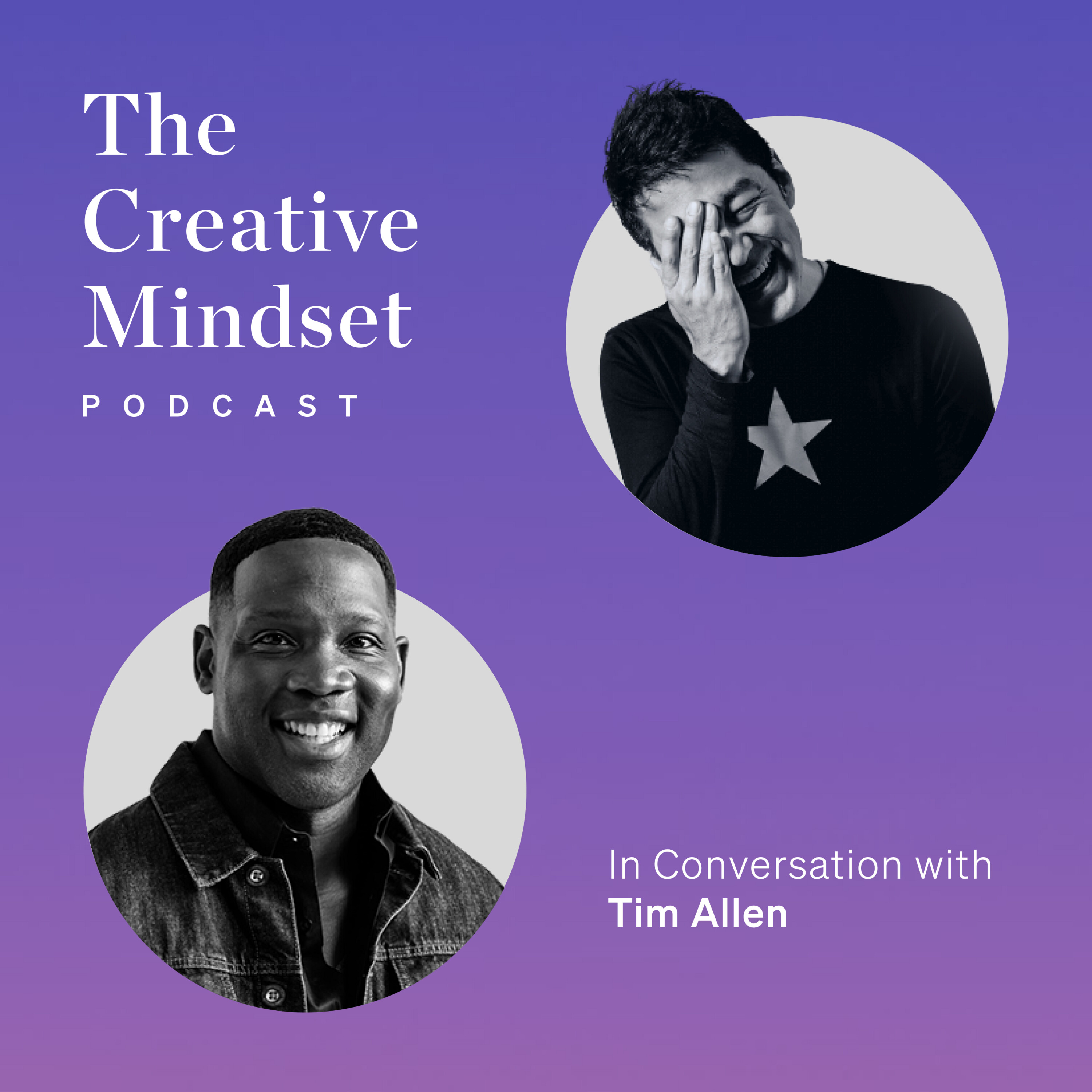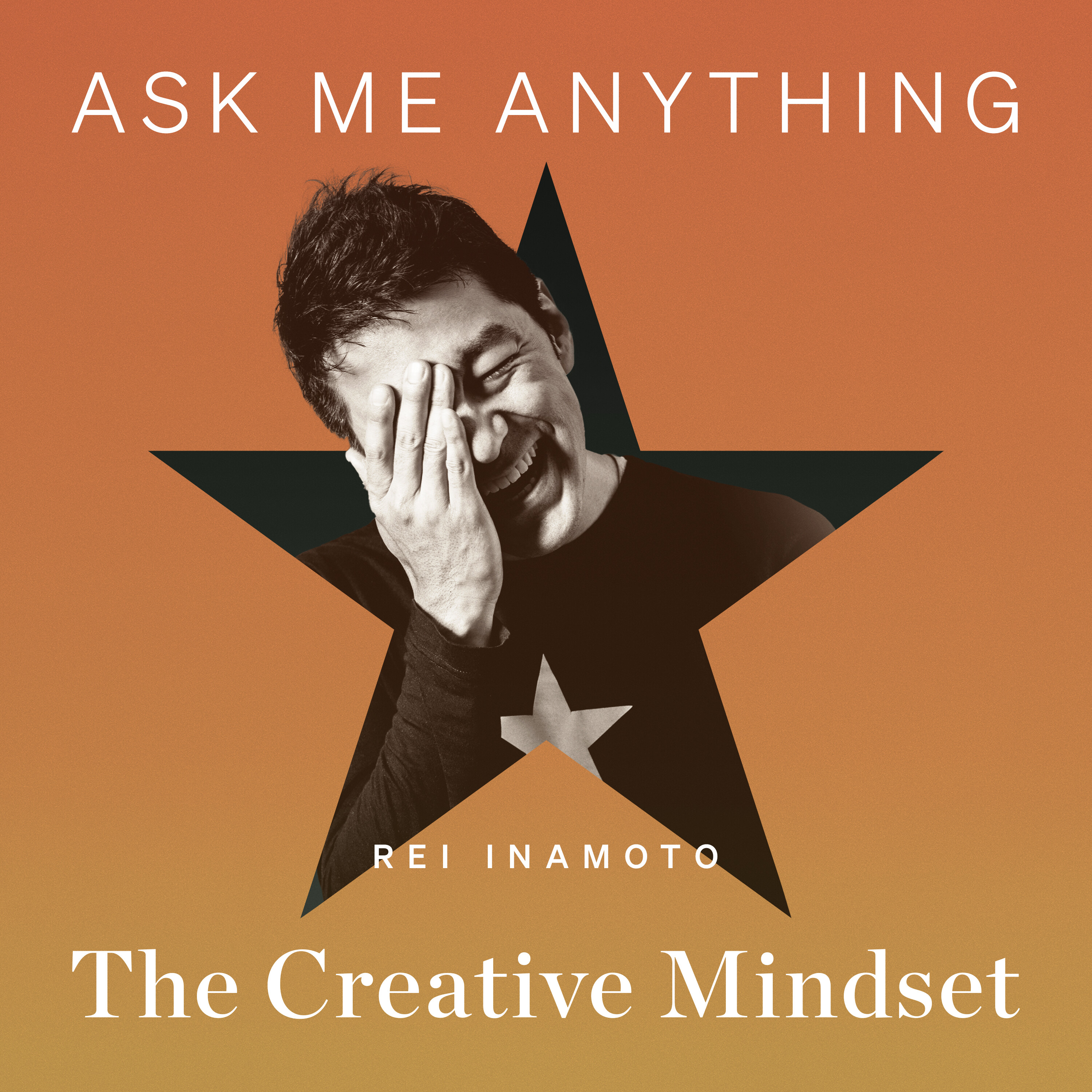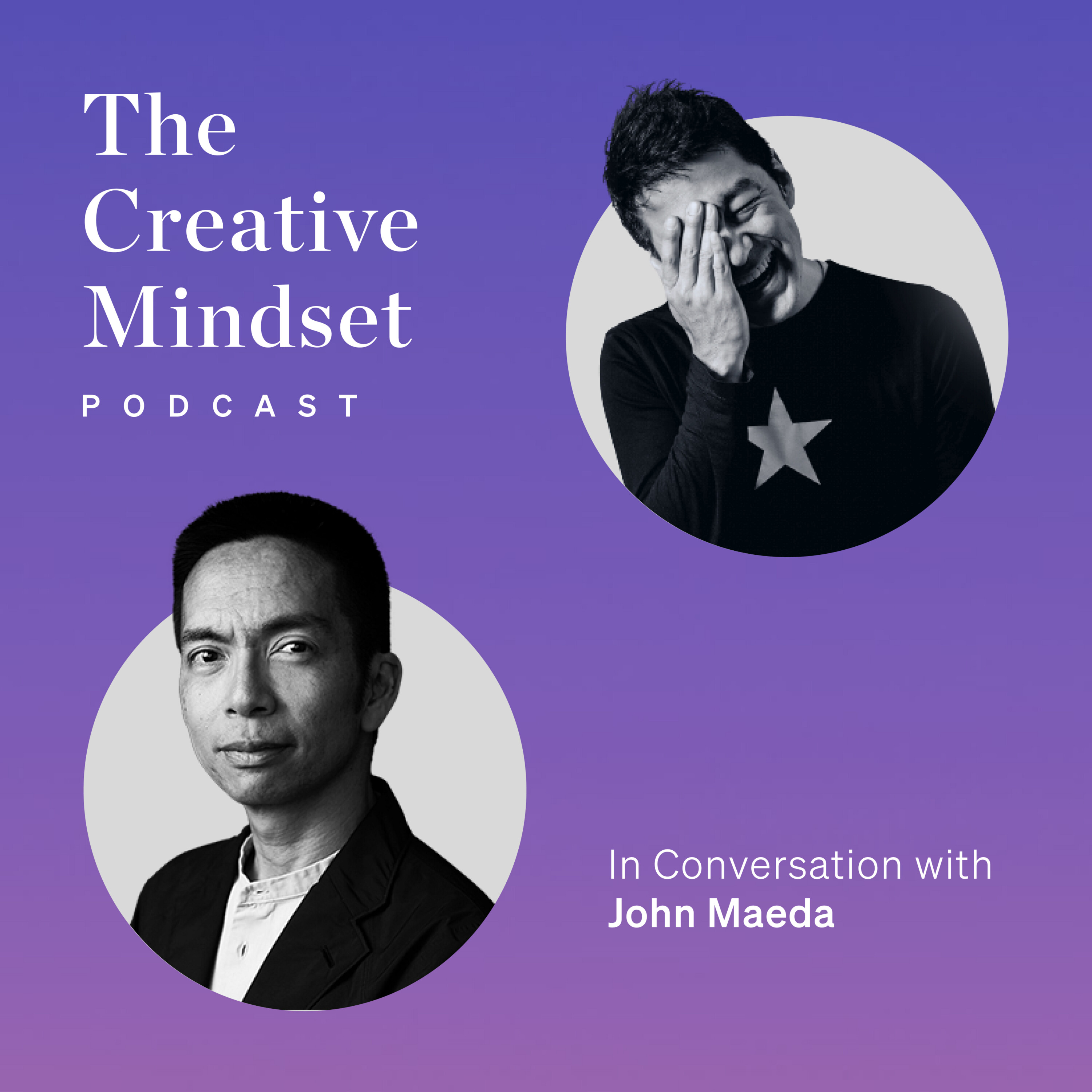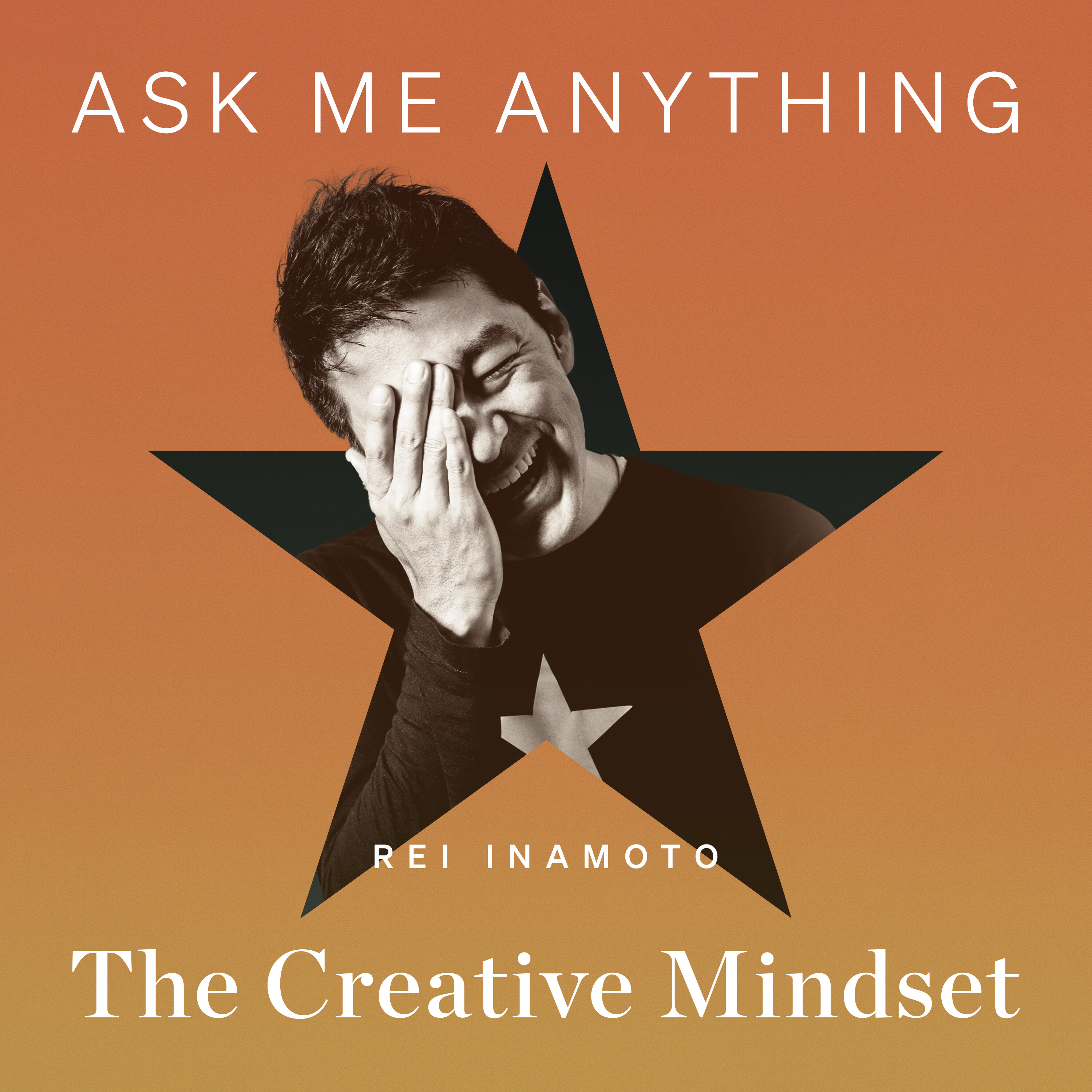This is Rainow's Podcast. The Creative Mindset.
Welcome to The Creative Mindset, a podcast about the art of building a career
through conversations with the world's leading practitioners of creativity.
It's an intimate journey on how they got started, their turning points,
failures, and tips on work and life. I am your host, Ray Inamoto,
the founding partner of I&CO, a global innovation firm based in New York and Tokyo.
Today's episode is part 2 of my conversation with Ian Spalter,
the man behind the design of Instagram. He is currently leading design at Meta on its
Metaverse initiative. He resides in Tokyo where we recorded our conversation a little while ago.
If you haven't listened to part 1 of my conversation with Ian, please do have a listen.
Part 2 is about how he nurtures creativity in a not-so-creative work environment
by introducing what Ian calls the state of play, especially in Japan where things can be a little
rigid. He also shares his thoughts on why talent is overrated, as well as his experience on being
a black designer and what helped him when building his own career. It wasn't really about him, but
who was around him. After the conversation, I will share my 3 key takeaways that are important to
the creative mindset. So, let's get started. You know, where you and I come from early in our
career, creativity was, I might say, assumed or expected. You know, people around us wanted us
designers to be creative and that was our job. You having gone to the big tech companies where
other aspects of the business, whether it's financial reasons or technical reasons,
creativity might not be, you know, the most important thing. So, how do you train or how do
you encourage an organization to be more creative? Yeah. I mean, you know, one of my favorite parts
about working in the agencies is the fact that there are these moments that you feel like you're
in this creative beehive, right? And ideas are the kind of currency, you know, that you live on.
And whereas I think in a lot of organizations, you usually need to get things out into the world,
but in the agency side, it could just be the pitch deck, right? Is the output.
But you know, when I got into some tech companies, like you say,
having those ideas and those well-designed things was not enough, right? And you're working with
people who wouldn't necessarily frame themselves as creative even though they might be making,
like engineers of course have to be pretty creative in their jobs to do what they do.
But there's not as much space for the type of creative thinking I think we're talking about
usually. I think what I was able to do in some instances is help design as a practice,
have more space to do better work by introducing
kind of creativity into the process of working through problems.
You know, I think as kids, we know how to be creative, right? You know, children,
it comes pretty natural. There aren't these fears around being judged as much about your
creative production. If you're in a sandbox, you're not really thinking about like, you might
think about whether your sand tower is higher than the person next to you, but we're all just playing
in the sand, right? And there's a lot of freedom in that. You lose that over time as an adult.
And so, the way I approached it in tech companies is to figure out how to get adults to
be in more of a state of play. That usually evolved in or involved experiments with
creating interesting constraints and kind of exercises to take people through.
Some of them might be kind of gimmicky but they worked. There's an example at Foursquare I
mentioned like you know, you would check in places and you'd get you know, some sort of response and
we were redesigning that at one point. And I think designers felt like there was a lot of
tension in trying to get everyone on the same page with what it should do in that moment.
And so, what we did was we took a Monopoly board, the Monopoly game board and we basically scripted
like just you know, analog scripted a scenario at each block, right? And so, the idea was that
everyone who's in that meeting could you know, roll the dice as they would play Monopoly and
they'd land on a spot in Monopoly. And then the designer would call out a scenario. You just
checked into the coffee shop for the 10th time. You just went to the place, the restaurant that
your friend recommended for the first time. And then everyone in that meeting had about 30 seconds
to sketch out and with a big marker what the application should show you in that moment.
And that meeting was A, probably one of the more fun meetings you'd go to that day.
Two, forced everyone to draw but draw in a very you know, broad stroke way. You didn't have a
half hour to sketch out the idea. You had 30 seconds, right? And what I find with those sorts
of experiments is when people have to not just talk about something, they have to actually draw
it and then you have something new to talk about as a group which changes the sorts of conversations
you have which then also changes the type of work that the designer is unable to do.
Because now they have everyone to put their cards on the table about what they think, right? You
know, and so, that was a good lesson for me to take opportunities to do that, to change the sort
of conversations you have about the work by introducing play. Another example at YouTube.
YouTube as a product, when you think of YouTube, it's kind of like this database of videos,
you know, it hasn't changed that much over the time it exists, it has existed.
So, as a design team, you're working in very constrained problems all the time.
And I wanted to get the design group to remind themselves that they all come from very prestigious
design backgrounds. I wanted to remind them that they're creative people. So,
I would use our time together as a group to do these similar design exercises.
Usually very timed, I'd throw out some sort of prompt or brief and in very short amount of time,
groups of people would have to produce something. So, it could be, you know, what if YouTube was a
wearable object or something like that, right? And so, I basically every week would do this
with the team. And in this case, the outcome wasn't so much that we had, you know, a new
solution to a given problem. It was a way to energize the team, get people used to working with
others on the team that they wouldn't normally work with. So, there was a relationship building
aspect to it. Three, get them into a rhythm of being generative, which is another thing that
sometimes tech companies want to get to the answer as quickly as possible.
So, you don't usually have the time or you might get pushback that you need the time to think
through options. But you can actually get to options very quickly if you build up those muscles,
right? And so, getting the team practice it and learning how to be generative really quickly.
So, that stuff paid dividends later, you know, when we would do an actual design sprint or,
you know, when people had to work together on some other high pressure project.
They had built up some of these muscles. So, this aspect of getting people into a state of play,
introducing play into the work environment, into the work experience of working through problems
is something that I have enjoyed doing and I think is really relevant. And I'm not the only
one that's done this. Other people have designed sprint frameworks and stuff like that, which do
a bit of this, I think. But finding the right constraints, encouraging people to be generative
in their problem solving, these are all skills that are useful, I think, in business broadly.
But that's how I've approached it.
Another topic that related to creativity that I want to dig deep a bit is creativity,
nurture or nature. You know, how much of and it may not be such a black and white thing,
you know, it is talent, nature or it is nurture that you can be taught. There's a mix of it,
but how much of it is nature and how much of it is nurture, you think?
You know, if you heard the saying, let me get it right...
Hard work beats talent when talent doesn't work hard, right? And I think I approach it
much more from, I think there's much more through nurture because there's so much lost
through nurture, if that makes sense, right? I think humanity could be far more creative
if we were taught to be, if that was valued and taught in schools and things like that.
And I think we do a lot less of that. So, we've probably lost more by not thinking of it much
more as a nurture problem, if that makes sense. Of course, there are people that are just wildly
talented and are just wired for creative thinking and in those cases, maybe they might quote-unquote
beat, you know, others, you know, who are not as naturally talented. But I think we know that
there's no nothing or all the best designers I know, they just know how to work, right?
And if they are at a level where they can be really efficient and cut through things really
quickly, they certainly have gone through a period where they've honed their skills
in kind of a grinding way. And so, that willingness to work, I think is a type of
nurturing, right? It's developed and if anything, the natural part is that passion and desire and
that drive more so than better visual acuity or something like that, you know, something that's
like genetic. What you were saying about introducing play into the workplace or even business,
one thing that I took away from what you were saying was, you know, for people to be open,
right? The other thing and I think this sort of relates to the Japanese cultural context where we
Japanese people are taught to be to pursue what's right in terms of questions, you know,
is this the right answer for this question? Yeah, I think what I took away from what you were saying
was that by introducing play, you are trying to get rid of the fear of being wrong or fear
of being, you know, is this the right answer? Worrying about it. Would you say that's what
you were doing with these exercises and plays? That's a big part of it is that to give yourself
the ability to be wrong and the freedom to be wrong because that's usually what constrains any
ideas. Like when you're tight, you know, you can't come up with new things. But yeah, culturally,
one thing I've learned here is that there's a general sense that there's a right way and a wrong
way. And yeah, good luck if you've learned all the right ways to do things but that is something
that feels like deep within the culture here. Yeah, I mean, you've been here for about three
years now and, you know, you do work in an American-centric company. So, you know, your
view within the day-to-day office work might be a little bit skewed. Totally. But, you know,
with your encounters with other Japanese organizations, either professional or personal
situations, what are aspects of Japan that you find to be, you know, quote-unquote creative or
interesting and different? And what are aspects of Japan that you think could be a bit more
creative? Well, I think in daily life here, you see these, you know, unexpected places where
there's creativity. Like the fact that there's so many little characters on everything here.
You know, somebody's making those things and that's valued some way or, you know,
the sound you hear in the subway or things like that. These moments of creativity and artistry
kind of sprinkled in, you know, throughout daily life here in a way that I haven't seen
other places really. And I think that there is a commitment to getting it right
and being very precise with the work and committed to getting something done at a very high quality
and that being a lifelong pursuit is, you know, not 100% unique to here but this place is known
for that level of commitment to excellence, right? But a humble excellence usually, right?
One of my favorite things to do is meet different shokunin and visit their studios and I get
tremendous inspiration. But when you go in there and you see their tool set, so you see what they're
doing, that's there every day. So, they're like, oh, you want to take a picture of that? Oh, I
guess that's fine. But you know, but I'm just like this is amazing. What you do here is amazing
every day. And it's like, yeah, that's what I do and you know, my father did it. My father's
father did it. He goes back, you know. So, there's that sort of special creativity that exists here
which I think is pretty unique. What kind of shokunin have you met? A bunch. So, some folks
in Kyoto like everything from like kioke makers. He's like more of an artist I'd say but he comes
from a key like a wood basket maker, right? But he does lots of like more organic forms as well
and so, he's made a name for himself by making more unique objects. Taka at Kaikado, like tea
caddies, learning about not just kind of the materials that they use and the specific materials
like they use a very specific tin because of how it will patina over time. And these are things
that you know, I don't think about day to day. So, I'm like amazed by them, right? Or you know,
different ceramicists as well. You know, there's lots of different ceramics here. It's such a deep
rabbit hole you can go into. So, I've been to different kilns. Yeah, it's something I love to
do, you know, and if I can, I will go. I went to the craft fair in Matsumoto in spring and saw all
the different work and yeah, I enjoy it. You know, your time in Japan, you've spent about
three years or so and love to get your observations about both Japanese culture and particularly
Japanese businesses and tell us a little bit of you know, observations that you've made about
Japan just in general.
Well, let's see. Observations. Okay, let's start with business. I think I have a deep
appreciation for my colleagues who work at Instagram and at Meta more broadly and I think
I have a deeper appreciation for what it is that they do in the sense that they have to balance
multiple worlds. You know, they have the traditional Japanese world where they
need to interface with Japanese companies and clients and ways of working amongst themselves.
They're in an interesting position because they're in this weird kind of working in a
western way but still with mostly Japanese. They have to deal with in the way that a western
company works which means things like last minute changes which is like a no-no, right?
You know, and things changing on a dime is like I thought you were going to do this but now you're
doing that. So, I have a deeper appreciation for the pain that they have to go through
to balance those two worlds, right? And then kind of maybe focus on that tension a little bit.
I think Japanese companies and professionals, there's a lot of work that goes into creating
a plan, right? And to getting everyone on the same page with creating a plan to do something.
And then execution, you know, there's no excuse but to get to that delivery and
usually at a high level of quality. Where the struggle is when there are changes
and adaptability seems to be more of an issue here. And being able to say, oh wait,
the conditions have changed, what do we need to do and adapt? That's hard, which is interesting.
And I wonder about what the implications are for things like software.
I don't like a lot of software in Japan isn't very good. It's almost odd, like websites and
things. It's like why is this like this? And I'd love to understand more or why,
but that's an interesting observation because Japan has this air of being very advanced
technologically and in some ways it really is. I mean, I would say it's, you know, if you think
about infrastructure and things like that, it's I don't know if the United States will ever get to
the level of real infrastructure that Japan has, you know. But when it comes to like using a bank
website, it's like good luck, right? So, that's really interesting to me. And I wonder if there's
something about the culture and that software culture is very adaptable, iterative, you're
moving quickly, you know, whether that, you know, comes into play.
So, just to expand on that, that's an interesting observation because when you look at the progress
of Japan as a nation, as a country and the economic powerhouse that it had once become
after the World War II, you know, since 1945 all the way to say like 1990s, the car industry,
the electronics industry, yeah. And most of it is based on hardware products, like objects,
things that you make. And Japanese companies have and had excelled at those industries.
But Japanese countries, companies and businesses have struggled to adapt to this software digital
centric world. And yeah, the observation that you just shared with us,
I've thought about a similar topic but I hadn't thought about in a way that you described which
is, is it because Japanese processes are, you know, in a way quite organized and very
on time, everything's on time, you know. Very reliable.
Yeah, very reliable. Like, you know, if something gets delivered,
somebody says that you will get delivered, you will get there, you'll get there. But I wonder
if the lack of adaptability is one of the challenges that Japanese companies may
are facing with a lack of advancement in software side of things. Yeah.
Software moves quickly, adapts, you know, and you have to make changes often, you know,
especially modern software processes. It's like you're releasing all the time and I wonder if
that's antithetical. I don't know if it's culturally but certainly, you know, how
companies tend to work here. And I know that's a very broad stroke there.
Yeah. Last few questions just before we wrap up. One of the topics I also wanted to bring up is
being a minority. You know, I grew up in Japan until I was 15 or so, but since 16,
I've been living overseas and I was, I'm still a minority there, right? Yeah. And you've,
although from a different cultural background and different perspective, you've been a minority
as well. So tell us a little bit about your, I don't know if you had advantage and disadvantage
growing up or just working as a minority designer. And then here, you know, you are
an outsider, right? Yeah. And then you might have advantage and disadvantage. But yeah,
tell us a little bit about your challenges that you may have faced and how you overcame.
I had some, I was very fortunate in my early career in that I had managers who were also
minorities. You know, whether it's Omar Waso, who was an entrepreneur and he was also biracial
and he was also the same mix as me. Or even RJ, I worked under Winston,
Dominican, very loud Dominican guy. You know, so that you had these moments where I had other
people managing me and that's something I try to take into account when I see younger designers
because that's where I often see it go wrong, you know, where people who are managing them
and in charge of their career don't have an understanding of that person's challenges.
And by challenges, I don't mean things like their ability. I think the part that I've gotten
taste of is a sort of a bias in terms of what's expected of you or people that look like me.
And so, when you're applying for a job, for instance, there's always a benefit of the doubt
that needs to be given. You've not done the job, the exact job that you're applying for and so,
companies interview to figure out whether they think you could do the job. But there's always a
doubt. And so, there's always a question of like, well, who gets the benefit of the doubt and say,
yeah, I think they're all right. And I found in my career that I usually have to do a lot more to
I've had to do a lot more to pass that bar of doubt. And I think it's easier now because I've
done the things that I've done, you build up these little, you know, these little, I don't know what
you want to call them, these little bits of validity to say, oh, you did Nike work great or
you did, you know, which other designers go through, right? You get these little stamps and
then, you know, that's meaningful for when you want to do the next thing. But that sense of like,
well, you can't be really that good, right? You know, that kind of look, you know, or that having
to do that extra loop or those extra questions or that extra bit because they just can't possibly
imagine that you would be that level. And then that cuts the other way is the reason that is,
it's maybe because there's biases because they've worked with people that look like you.
And maybe that person wasn't good at their job, which then means that when you take on that job,
you are now going to reflect on other people that look like you that come after you.
I felt that at RGA actually, right? Then when I joined back in those days,
I learned later that there was a designer who hadn't done well, right? And that was kind of
reflected even on the level of kind of interviewing that I went through there.
And so, there have been moments like that throughout my career but I would say that
I've also been privileged to, you know, had other leaders that have been minorities and that's been
really helpful to my career. So, I feel like pretty blessed to have had them in my life and
something I think about with young designers and how I help develop them.
What advice would you give to young Japanese people?
People in their 20s, let's say, you know, starting their careers.
It's a hard question to answer because as a foreigner, I might have my perspective. I might say,
you know, learn to be more adaptable, push against the grain, help change the country,
you know, be active. But you know, there's realities of doing that and I think living
here has taught me that for every person that stands out here, they're taking a lot of risks
to do that and they're leaving, you know, there's significant trade-offs that they're making to
stand out. And so, I would encourage young people to build communities, creative communities,
think of embrace the richness of Japanese culture because it is something that I think the world
does value and needs to, you know, that when I'm going back to the Shokunin thing,
a lot of these crafts are dying because not enough people value them today.
And so, I would encourage young people to look at some of the roots of Japanese culture that
have been developing over thousands of years and keep those things alive, make them new again.
And you see signs of this in certain, you know, towns outside of Tokyo developing small communities
to reinvigorate a different way of living that is like uniquely Japanese but also new. And I would
love to see more of that happening because I think it's something that the world actually needs
outside of just, you know, following the duty of like going to school and doing what's expected.
I think there are opportunities to help Japan as a nation develop and find a bridge between
the old and create a new new. And so, yeah, I'd love to see that.
Cool. Coming out of this conversation with Ian, there are three key takeaways that are important
to nurturing the creative mindset. Number one, the permission and the freedom to be wrong is
essential to creativity. Ian talked about what he calls the state of play, simple activities and
exercises such as drawing or games that get people out of their comfort zone. He uses these exercises
for his team to let them go out of their daily routines and come up with not just ideas, but just
be in a place where they can be wrong and it's OK to be wrong. If you are a young person building
a career, I think it would benefit for you to look for a manager or people who give you that
kind of permission to be wrong. It's not easy to find, but I think if you can come across a manager
or leader who allows people around them to be wrong, I think that's a sign of potential nurturing
of creativity. Or if you are in a position to manage and lead other people, then provide that
space for your team to be wrong and allow people to disagree with you. Number two, humility is
underrated. Ian talked about his hobby of going to visit shokunin, which means a craft person
or an artisan in Japan. People who by hand make typically traditional daily objects such as
chopsticks, sandals, baskets, or wooden buckets. And these shokunins would make these daily utility
objects by hand, sometimes quite painstakingly. He called this a commitment to humble excellence.
And it was refreshing to hear from somebody who's been living in my home country and observed
there's that kind of humble excellence in simple tasks such as making these daily objects.
And I appreciated how that kind of commitment goes a long way in creating things and nurturing
creativity. Number three, representation does matter. Ian talked about earlier in his career,
he said that he was lucky to have a boss or bosses in a few different environments,
people who are of color. He said that he wasn't lost on him back then, but also realized that
later in his career, when he was in a position to manage others, that it makes a difference for
people under him, especially for those who are of people of color or of the of the minority
background. So three key takeaways. Number one, the permission and the freedom to be wrong is
essential to creativity. Number two, humility is underrated. And number three, representation
does matter. Hope you enjoy the last two episodes with Ian Spalter, the former head of design at
Instagram and the current head of design at Meta for the Metaverse initiative. In the next episode,
we will share a story from Cindy Gallop, the founder and the CEO of Make Love Not Porn and
the former CEO of BBH US. She shares her insights on how she went from an intern to a CEO of one of
the most successful creative companies in the world. So stay tuned. If you like this episode,
please subscribe wherever you get your podcasts. I am Rei Inamoto, and this is The Creative Mindset.
